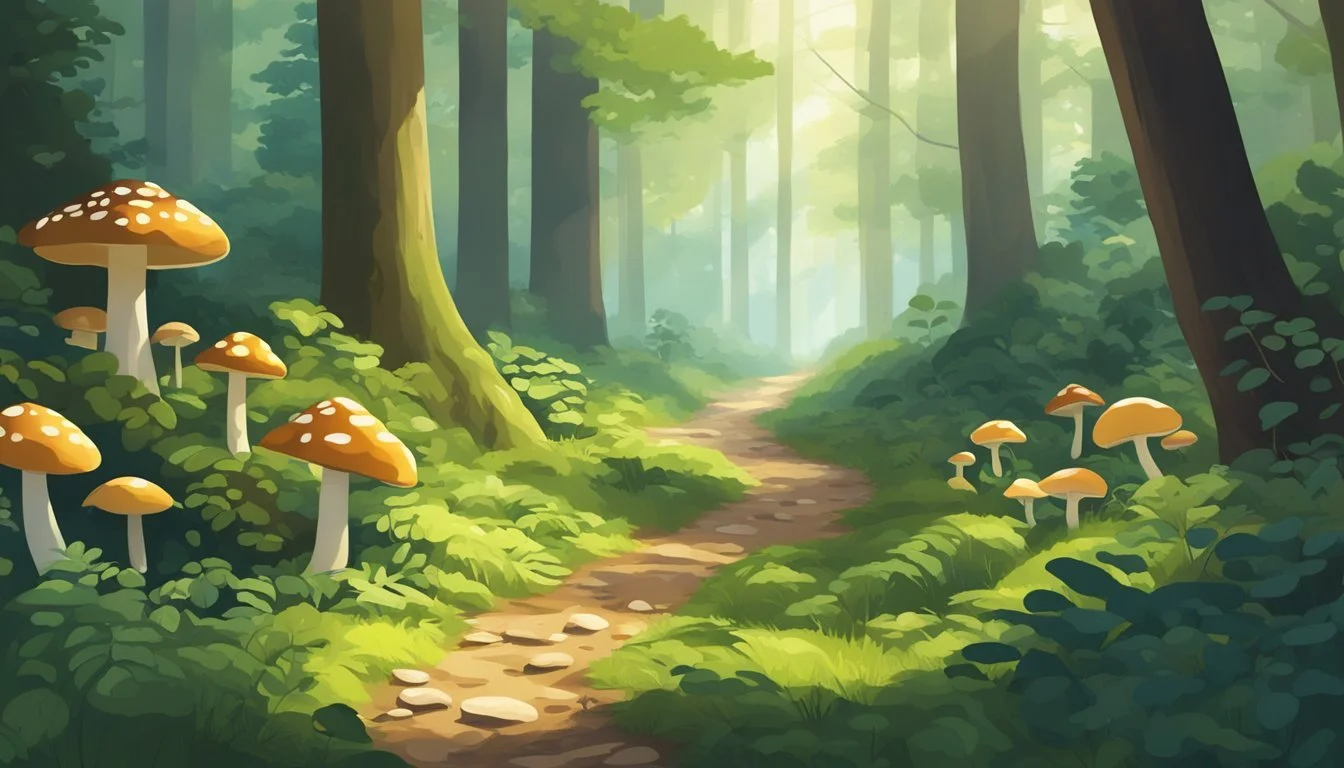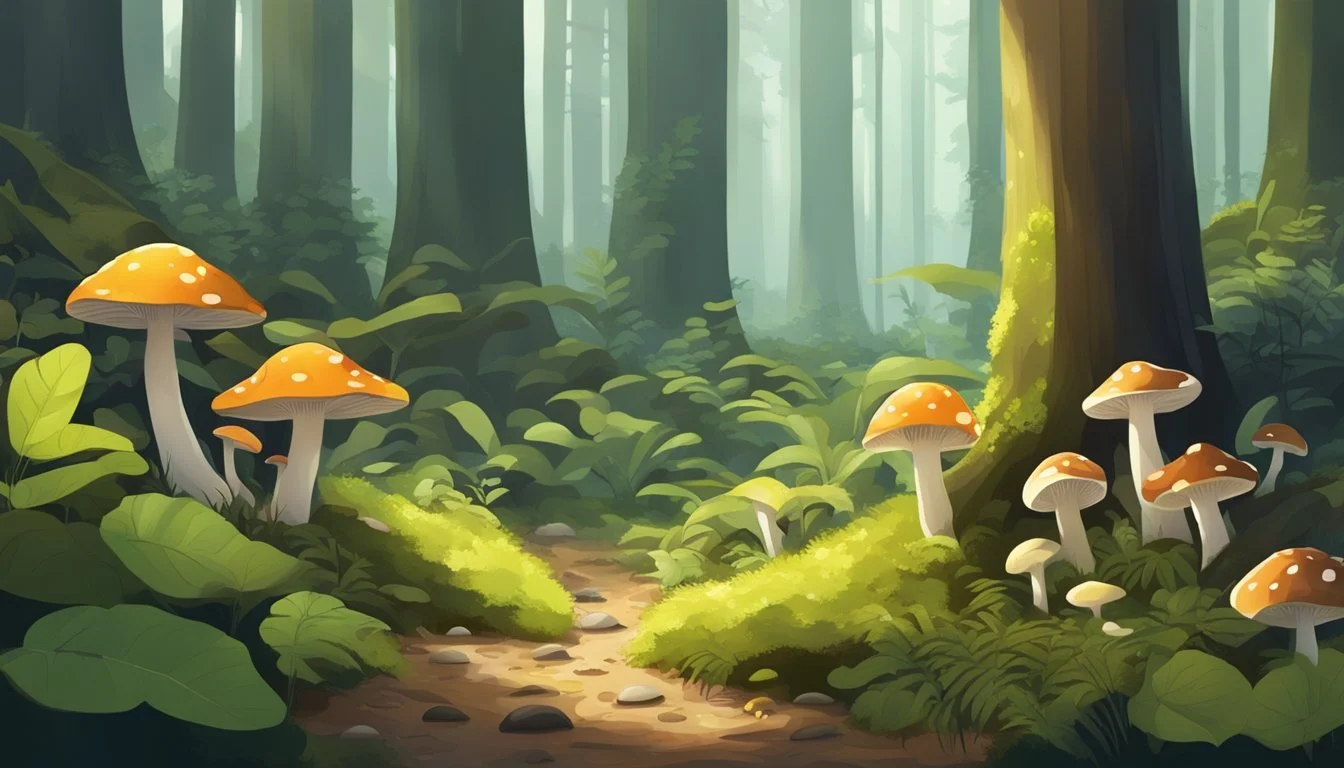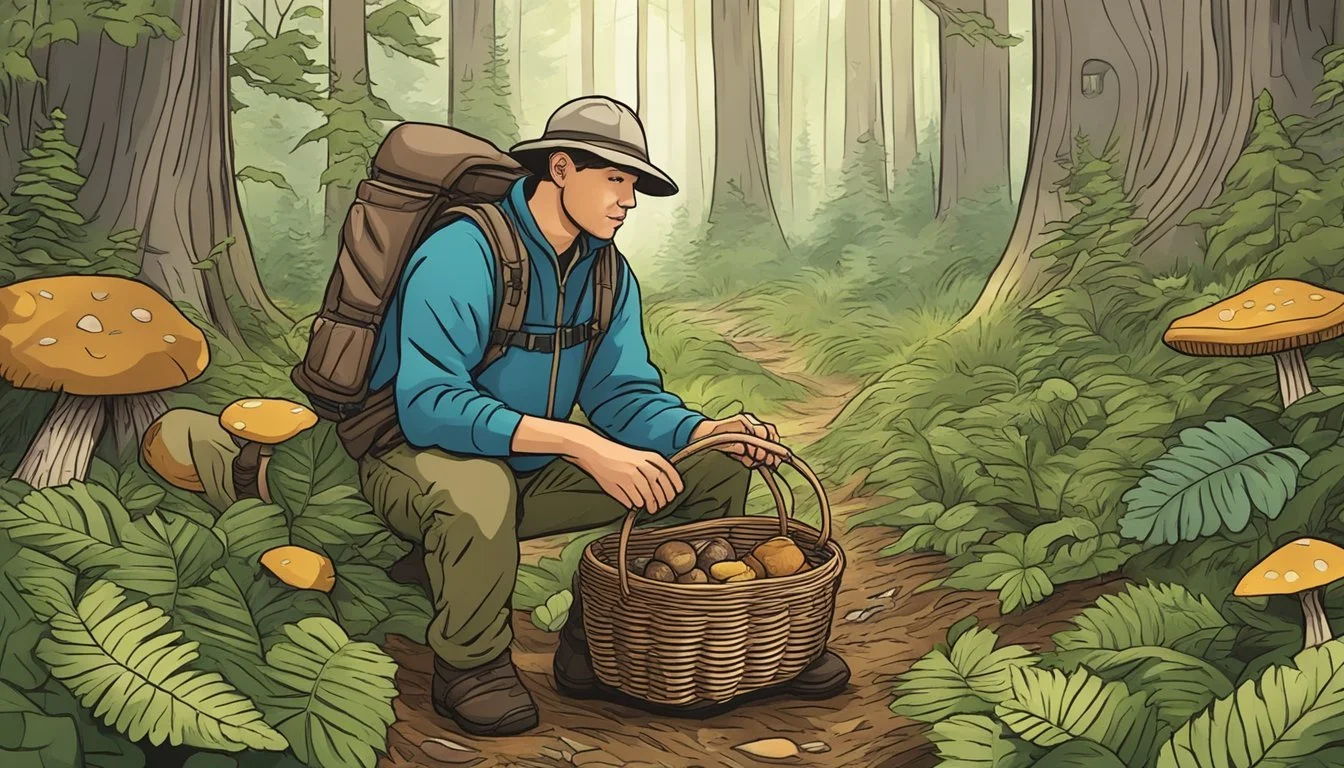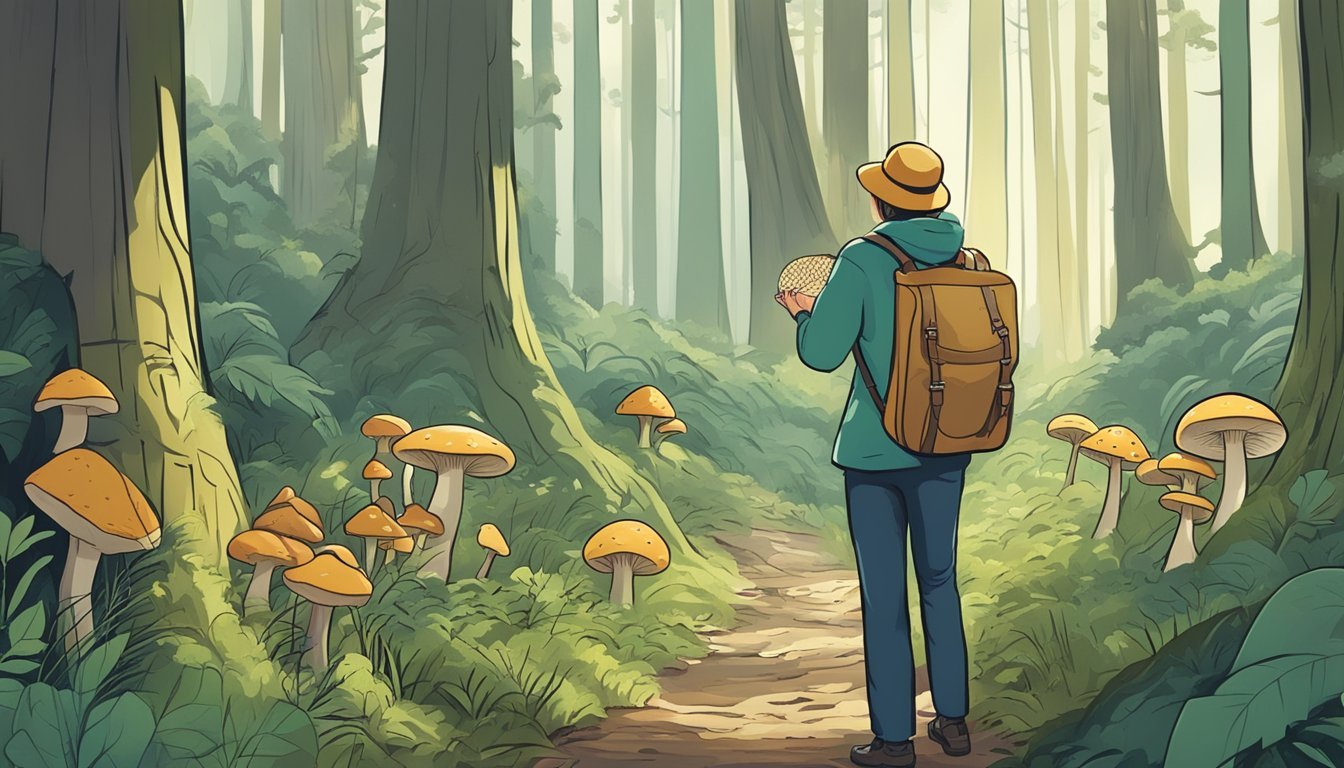Appalachian Mushroom Hunting
Expert Tips for a Successful Foray
Mushroom hunting in Appalachia offers a unique and rewarding outdoor experience for foragers. The Appalachian region, with its lush and diverse forests, provides an ideal habitat for a variety of mushrooms, making it a paradise for mushroom enthusiasts. From the highly sought-after morel mushrooms found throughout West Virginia and North Carolina to the emerging interest in Appalachian truffles, the opportunities for discovery are endless.
Exploring the rich woodlands of the Appalachian Mountains exposes foragers to an array of edible fungi. Morel mushrooms, often hunted as a family tradition in the region, are especially prized for their culinary versatility. During the prime season, typically from March to June, these mushrooms can add a gourmet touch to many dishes, making the hunt as delightful as the harvest.
With the right knowledge and a keen eye, anyone can enjoy the thrill of foraging for mushrooms in Appalachia. Seasoned foragers and beginners alike find the mountains a fruitful ground for exploring nature's bounty while learning more about the fascinating world of fungi. The tradition of mushroom hunting thus connects people not only to their environment but also to generations of foraging wisdom.
Fundamentals of Mushroom Hunting
Mushroom hunting combines the excitement of discovery with the benefits of connecting with nature. Critical aspects to master include understanding the ecosystems that foster fungi growth and practicing responsible foraging methods.
Understanding Mushroom Ecology
Mushrooms thrive in various ecological niches, often forming symbiotic relationships with plants. Mycorrhizal fungi form associations with tree roots, helping trees absorb nutrients while gaining carbohydrates from them. Oak trees in the Appalachians, with nearly 60 species, are common hosts for these mushrooms.
Other fungi, known as saprophytic fungi, decompose organic matter, contributing to nutrient cycling in forests. Recognizing tree species, soil types, and moisture levels will aid in locating specific mushrooms. Awareness of these factors can turn a novice into a skilled mushroom hunter.
Safety and Ethics of Foraging
Safety in mushroom hunting is paramount. Many wild mushrooms are toxic and indistinguishable from their edible counterparts. Beginners should consult field guides, such as ones by experts like Walter E. Sturgeon, and collaborate with experienced foragers. Always carry a reliable identification book and never consume a mushroom unless certain of its edibility.
Ethical foraging includes respecting local regulations and the environment. Avoid overharvesting to ensure fungi populations remain sustainable. Stick to trails to minimize ecological damage. Properly gather mushrooms by cutting them at the base rather than uprooting, which helps preserve the mycelium network for future growth.
Mushroom Species in the Appalachian Region
The Appalachian Mountains host a diverse array of mushroom species, ranging from common edibles to highly prized medicinal varieties. Understanding their characteristics aids in proper identification and safe consumption.
Characteristics of Common Edible Mushrooms
Many edible mushrooms found in the Appalachians are easily identifiable with distinct features. The Chicken of the Woods (Laetiporus sulphureus), notable for its bright orange-red color and soft, velvety texture, is sought for its flavor and meat-like consistency.
Morels are another favorite, identifiable by their honeycomb-like appearance and hollow stem. Their distinct look and flavor make them a culinary delight.
Some mushrooms, like the Chanterelle, have a wavy, trumpet-like shape and a fragrant, apricot scent. Their ability to grow in small clusters around hardwood trees in damp, mossy areas is a key identification trait.
Identifying Medicinal Varieties
Medicinal mushrooms play a significant role in traditional and modern medicine. Reishi mushrooms are well-known for their immune-boosting properties. They have a woody texture and a reddish-brown, varnished appearance often found on decaying trees.
Turkey Tail mushrooms (Trametes versicolor) are noted for their fan-shaped, multicolored cap and overlapping layers. They are used for their anti-cancer and immune-modulating effects.
Lion’s Mane stands out with its cascading, icicle-like spines and is studied for its potential cognitive benefits. Found on hardwood trees, it has a white to cream color and a tender texture when young.
Identifying these medicinal mushrooms requires attention to their distinct physical features and the specific environments in which they thrive.
Equipment and Techniques
Appalachian mushroom hunters need specific gear and methods to efficiently gather mushrooms like morels and chanterelles. This section covers the essential items and techniques required for a productive and safe mushrooming experience in the forests of Appalachia.
Essential Gear for Mushroom Hunters
Proper equipment is crucial for a successful mushroom hunting expedition. Comfortable, sturdy walking shoes with good traction are vital for navigating diverse terrain. Breathable mesh bags or baskets are recommended for collecting mushrooms, allowing spores to disperse while keeping the mushrooms intact.
A pocket knife is useful for cutting mushrooms at the base, preserving the root system. Additionally, having a small brush to clean off dirt and debris from mushrooms in the field is important.
Packing essentials like water, a small first aid kit, and a snack can ensure comfort and safety during longer trips.
Methods for Efficient Mushrooming
Efficient mushrooming involves knowing where and how to search. Morels and other edible fungi often grow near specific trees such as ash, elm, and oak. Mushroom hunters should look in damp, shaded areas, especially after rainfall.
Checking patches of forest floor that have previously yielded mushrooms is a valuable technique, as mushrooms tend to grow in the same spots annually.
To avoid damaging future crops, mushrooms should be carefully cut at the base with a sharp knife rather than being pulled from the ground. This practice helps maintain the mycelium, the mushrooms' root-like structure, ensuring future growth.
Field Guides and Identification Tools
Accurate identification is essential in mushrooming to avoid poisonous varieties. Carrying a field guide specific to Appalachian mushrooms can aid in proper identification.
Books by knowledgeable authors that include high-quality photographs, descriptions, and information on look-alike species are highly recommended.
Digital tools such as mushroom identification apps can also be helpful. These apps often feature user-uploaded photos, GPS mapping of mushroom patches, and detailed species information.
For beginners and experts alike, joining local mushrooming clubs can provide opportunities to learn from experienced hunters and access shared resources.
Morel Mushrooms: A Case Study
Morel mushrooms are a prized find for many foragers, known for their distinct appearance and savory taste. Understanding their habitats, effective hunting techniques, and best methods for storing and preserving them is essential for any successful morel expedition.
Habitats and Growing Conditions
Morel mushrooms thrive in specific environments. They are often found in deciduous forests rich with oaks and elms. Ideal spots include south-facing slopes and forest edges where moist conditions prevail. Morels typically emerge during the early season as ground temperatures warm to around 50-55 degrees Fahrenheit after rains.
Different varieties can appear sequentially, with gray morels usually showing up first, followed by black, half-free, and yellow morels. Knowing these particulars can increase the chances of a fruitful hunt.
Morel Hunting Techniques
Hunting for morels requires a keen eye and good timing. Morels can be well-camouflaged in their surroundings, making patience and diligence key aspects of a successful hunt. Many experienced hunters recommend searching around decaying trees, especially where oaks and elms are present.
Also, look near streams and riverbeds during the early season, ideally the day after a rain shower when conditions are moist. Use a gentle hand to pluck the mushrooms, taking care not to damage the delicate fungi or disturb their growing habitat.
Storing and Preserving Morels
Once harvested, morel mushrooms need proper storage to maintain their quality. Fresh morels can be stored in the refrigerator for about a week. To extend their shelf life, consider drying them. Dehydrators work well at a setting of 110 degrees Fahrenheit for about 8-10 hours. Alternatively, use an oven on its lowest setting, keeping the door cracked open for the same duration.
Once dried, morels can be stored in jars and kept for up to a year. When ready to use, simply rehydrate the mushrooms in water for about 20 minutes. Proper storage and preservation ensure that the delicious taste of morel mushrooms can be enjoyed long after the hunting season ends.
Environmental Factors Affecting Fungi
Fungi in the Appalachian region are influenced by various environmental conditions that impact their growth and overall health. Key factors include changes in climate and the role of fungi in maintaining forest ecosystems.
Impact of Climate Change
Changes in climate directly influence fungi in the Appalachians. Variation in temperature and humidity affects the fruiting body formation of many mushroom species. For example, warmer and wetter conditions often promote the growth of fungi, while prolonged dry periods can inhibit it.
Additionally, increased carbon dioxide levels and erratic weather patterns lead to shifts in fungi distribution. Some mountain fungi species might migrate to higher altitudes, seeking favorable microclimates. This change can alter the balance of fungi species in these habitats.
As climate change progresses, oak trees and other forest plants also face stress, affecting their symbiotic relationships with fungi. This could lead to a decline in some fungi that rely on specific tree species, impacting the forest's ecological balance.
Fungi and Forest Health
Fungi play a critical role in forest ecosystems. They assist in decomposing organic matter like fallen leaves and dead wood, contributing to nutrient cycling. This process enriches the soil and supports plant growth, which is fundamental for forest health.
Some fungi form mycorrhizal associations with tree roots, enhancing water and nutrient uptake. These partnerships are especially important for trees like oak, which dominate many Appalachian forests. Fungi provide trees with necessary nutrients, while trees supply fungi with carbohydrates.
Fungi also have the unique ability to filter out pollutants, such as heavy metals from the soil, by breaking down complex compounds. For instance, oyster mushrooms are known for their bioremediation capabilities, aiding in the detoxification of forest environments.
These interactions underscore the importance of fungi in maintaining a balanced and healthy forest ecosystem.
Foraging in Southern Appalachian
Southern Appalachian boasts a rich diversity of mushrooms due to its unique climate and geography. The community practices centered around mushroom hunting not only provide a bounty of foraged foods but also foster shared knowledge and passion.
Rich Diversity of Mushrooms
The Southern Appalachian region is known for its diverse range of mushrooms. The area's rainy climate, complex soils, and varying topography offer perfect conditions for mushroom growth. Boletes, chanterelles, and little brown mushrooms thrive here.
Mycologists have identified around 2,500 species out of an estimated 20,000 present. Additionally, summer and fall seasons are particularly fruitful. Mushroom hunters frequently find prized specimens during these times, enhancing their foraging experience.
Community and Harvesting Practices
Mushroom hunting is deeply rooted in community practices in Southern Appalachian. Harvesting is often a group activity, where shared enthusiasm and knowledge play crucial roles. Communities organize foraging excursions, especially following thunderstorms that saturate the ground and trigger mushroom growth.
Events such as those led by Asheville mycologists bring people together to explore and learn. Beyond finding mushrooms, these activities promote cultural heritage and sustainable harvesting methods, preserving this tradition for future generations.
Legal Considerations and Regulations
Appalachian mushroom hunting requires an understanding of local laws and sustainable practices. This ensures that foraging activities are both legal and environmentally friendly.
State Laws and Foraging Rights
Various states in the Appalachian region have different regulations for mushroom hunting. In places like Indiana, for example, mushroom hunting is permitted on state-owned lands such as parks and forests, with restrictions applying only to nature preserves.
Mushroom hunters must be familiar with specific local guidelines to avoid legal issues. Fines and penalties can occur if hunters are caught violating these regulations. General rules include obtaining proper permits where necessary and adhering to seasonal restrictions to help protect mushroom populations.
Sustainable Harvesting Guidelines
Sustainability is crucial for maintaining mushroom populations in Appalachia. Foragers should practice selective picking, focusing on mature mushrooms and leaving younger ones to mature. This promotes growth and ensures future seasons of abundant foraging.
Always rotate harvesting spots. Constantly returning to the same location can deplete resources and negatively impact the ecosystem. Additionally, avoid overharvesting even when mushrooms seem plentiful. Ethical foraging helps maintain a healthy balance and supports the natural environment.
Popular Regions and Trails
Mushroom hunting in the Appalachian Mountains offers a unique and rewarding experience. Key areas in Appalachia, including West Virginia and Ohio, provide excellent opportunities for foragers with numerous trails and protected parks known for their rich fungal diversity.
Mushroom Hotspots in Appalachia
West Virginia is renowned for its forested landscapes, making it a prime location for mushroom hunting. The Monongahela National Forest, in particular, is famous for its diverse mushroom species. Hunters frequently find morels, chanterelles, and Chicken of the Woods here.
Ohio’s Appalachian region also boasts excellent foraging spots. Shade River State Forest in southeastern Ohio is a well-known spot for mushrooms, especially during the fall season. The forest's diverse ecosystem provides an ideal habitat for various mushroom species.
The Blue Ridge Mountains offer another hotspot. Stretching from Georgia to Pennsylvania, this region's mixed forests are rich in fungal species. Mushroom hunters often explore areas around the Great Smoky Mountains National Park, which is particularly known for its abundant mushroom varieties.
Notable Parks and Protected Areas
The Monongahela National Forest in West Virginia spans over 900,000 acres. This expansive area is celebrated for its morels and chanterelles. The diverse terrain, which includes hardwood forests and moist, shaded areas, is conducive to the growth of mushrooms.
Great Smoky Mountains National Park, straddling the border between North Carolina and Tennessee, is another prime location. Known for its biodiversity, this park is a treasure trove for mushroom foragers. The park's numerous trails lead through rich, moist woodlands where mushrooms thrive.
In Ohio, the Wayne National Forest is particularly noteworthy. Covering parts of the Appalachian Plateau, it provides a variety of habitats favorable to mushroom growth. Enthusiasts often find oyster mushrooms, reishi, and morels along its trails.
These parks and regions not only offer great mushroom foraging spots but also present stunning natural beauty, making the hunt both rewarding and scenic.
Engaging with the Mushroom Hunter Community
Engaging with the mushroom hunter community in the Appalachian region can greatly enhance one's experience and knowledge. Participation in festivals, foray events, and learning from experienced mycologists can provide unique insights and build lasting connections.
Festivals and Foray Events
Festivals and foray events are some of the best ways for mushroom hunters to connect. These gatherings often feature guided hunts, workshops, and lectures. For instance, the Asheville Mushroom Club organizes several forays throughout the year, attracting enthusiasts from all over the region.
Events like the Mushroom Festival in Louisville offer opportunities to learn about different species, cultivation methods, and the ecological importance of fungi. Attendees can also participate in identification sessions and culinary demonstrations, making these events both educational and enjoyable.
Learning from Experienced Mycologists
Experienced mycologists, such as Alan Muskat and Willie Dodson, play a critical role in educating the community. They offer invaluable knowledge on identifying edible and medicinal mushrooms while emphasizing safety. Alan Muskat, known as the Mushroom Man in Western North Carolina, regularly conducts workshops and tours, sharing his expertise with both novices and seasoned hunters.
Willie Dodson, a mycologist based in Johnson City, Tennessee, provides workshops on the preparation and use of mushrooms. His sessions usually cover identifying common edible species and recognizing dangerous look-alikes. Learning from these experts can significantly enhance a hunter's skills and confidence in the field.
Conclusion
Mushroom hunting in Appalachia offers a rich and rewarding experience for those eager to explore the region's diverse fungal life. One can find a variety of mushrooms, such as Morels, which have a unique taste and texture that distinguish them from common varieties.
Another popular mushroom found in Appalachia is Lion's Mane. Known for its culinary and medicinal benefits, this mushroom has garnered attention for its positive effects on both body and brain health. Foragers value it highly during the fall season.
The practice of mushroom hunting has deep roots in Appalachian culture. Families partake in this activity not only for the mushrooms themselves but also for the communal experience and connection to nature it provides.
Storing these mushrooms properly is essential. Morels, for instance, can be kept in the refrigerator for about a week before they start to decay. Alternatively, they can be dried to extend their shelf life.
Overall, the rich fungal diversity in the Appalachian region provides ample opportunities for both seasoned mycologists and novice mushroom hunters. By exploring these forests, enthusiasts can find both culinary delights and a deeper connection to the natural world.









